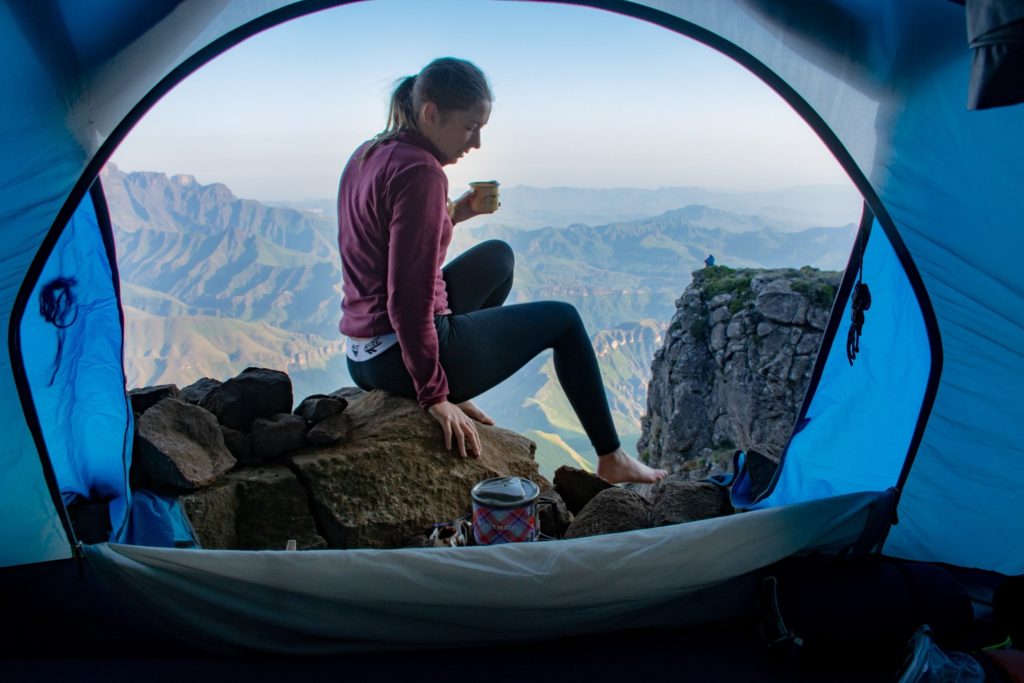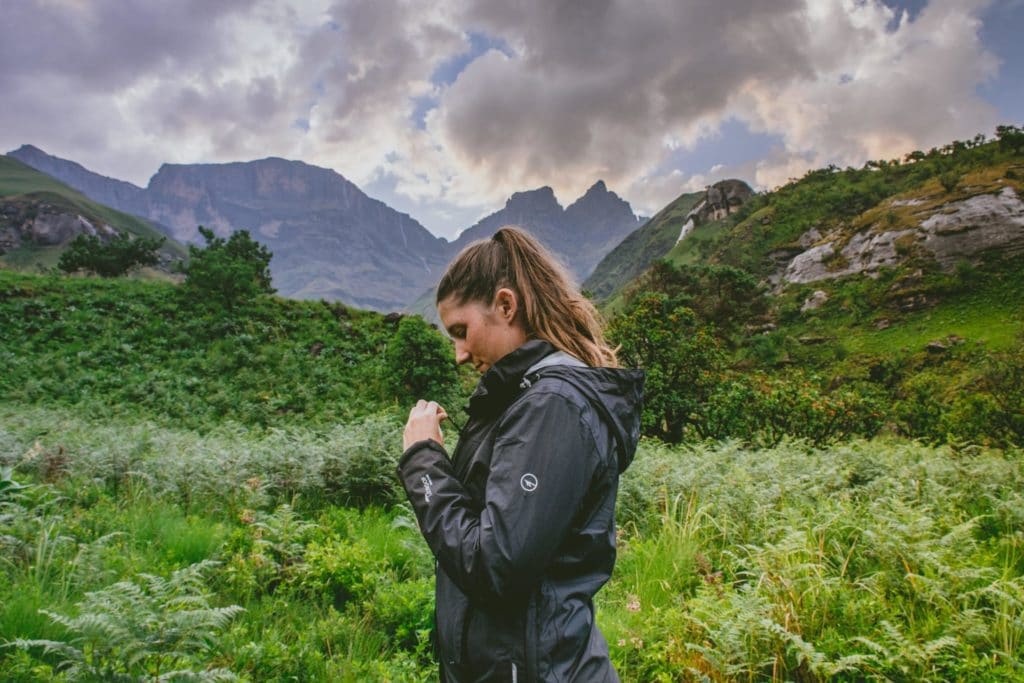Explore with confidence
The Mnweni Valley is rated a glorious introduction to the sweeping passes of the Drakensberg mountains, but it is also one of the most challenging hikes around.
Melanie van Zyl took some iconic Hi-Tec hiking kit to the peaks and shares some advice on how to prepare for a similar adventure.

A UNESCO World Heritage Site, the Maloti-Drakensberg Park encompasses both the uKhahlamba Drakensberg National Park in South Africa and the Sehlathebe National Park in Lesotho and is composed of 12 protected areas. Interestingly, Mnweni does not fall into any of these officially protected zones and sits instead on tribal land occupied by traditional Zulu communities and small-scale farmers. Driving towards the cultural centre – base camp, beginning and bureau for the trail to come – you’ll pass donkeys and dogs, rondavels and the start of slopes that will soon become very very steep. The undeniable natural beauty and rural remoteness draw intrepid travellers to this region and hiking remains the best way to appreciate the majesty of these seemingly insurmountable mountains.
The first thing I read about the Mnweni Hiking circuit in the Northern Drakensberg? “It is however not to be underestimated and will require a high level of fitness and hiking competency”. Eish.
First up, get training
I figured if I was going to tackle this hike, I actually wanted to enjoy myself. To do that, I had to be prepared. Focusing on strengthening the old legs and lower back, it was time to hit the gym and count off squats, lunges and deathly burpees. In between, I ran regular five-kilometre routes to get time on the legs, plus I hit the mountains, of course. My closest climbs were Hennops River, Shelter Rock and Rustig in the Magaliesberg area. I chose the last two for their dramatic inclines to test out the backpack and suss out any possible discomfort. Did the straps chafe? Should I wear a long sleeve shirt? Are the buckles all comfortable? That kind of thing. I was so pleased to have worked out all this nitty-gritty so I could focus on the physical challenge once I got walking along the Mnweni River.
Pack Carefully
The hike usually takes between three and four nights to complete, and one has to be self-sufficient. I chose a 50L pack (you can’t pack excess goods if there’s no space, right?) and strapped a tent to the outside because we’d be camping along the way. We filled up with water along the way and needed to carry all food for the long weekend. Weather is unpredictable in these mountains, so clothing needs to cater to all scenarios too. Here is my full packing list.
- Hiking boots (well worn in and one size too big to accommodate foot swelling)
- 5 x pairs of thick socks (to help with cushioning and fill out bigger shoe size)
- Tent, mattress/foam mat, warm sleeping bag and inflatable pillow or puffy jacket (the lighter, the better!)
- 3 x t-shirts
- Sports bras and clean underwear for each day
- 2 x pair of tights
- 1 x rain jacket
- 1 x pair of thermals (longs and tops, which doubles nicely as PJs)
- 1 x lightweight fleece
- 1 x warm tracksuit pants
- Shoes to wear around camp (I’m prone to shin splints, so I packed lightweight strops)
- Toiletries (toothbrush, mini toothpaste, wet wipes, deodorant, sunscreen, one-ply toilet paper) Beanie, buff, gloves
- Cutlery and crockery
- 3L hydration bladder and empty sports bottle
- Headlamp
- Trash bag

Don’t forget that life-saving gear
Hi-Tec Ladies Lightweight 1/4 Zip Fleece: The morning and evenings proved chilly, and this fleece is a significant body warmer despite being so lightweight. I also wore it to sleep in on some nights, and it kept me extra snug.
Hi-Tec Ladies Desna Rain Jacket: November hiking comes with its perils. The biggest one has to be the epic thunderstorms that crash down upon the Drakensberg. This lightweight raincoat fit easily into the top of my pack (easy to access!) and features the same waterproofing profile as the flysheet on my tent. It kept me perfectly warm and dry during the rain.
Jetboil Gas Stove and Arise coffee: After said storms, sometimes all you want is an easy, warming and speedy cup of coffee. The Jetboil is the best gas stove I’ve come across and takes a matter of minutes to heat up. Being a coffee snob, I also loved these new Arise Pour-Over Coffee Sachets (roasted and packed in South Africa), an absolute mountain treat! Even better, is that by buying these you help plant trees too.
Extra Socks: Thanks to the rain, the hills are green a lush, and there’s lots of river wading to do to cross the flush streams. I was grateful I packed spare so that I could sleep in a pair of dry socks at night.
Hiking poles: Not everyone’s cup of tea, but I find hiking poles a lifesaver – especially when the ascent and descent is so steep and equipped with a heavy hiking pack, such as is the case for Mnweni. They provide extra balance and serve as a stable support for clambering about.
Long tights: Everyone differs, but this is my hiking attire of choice. I wore my trusty Hi-Tec Leo Movement Long Leggings on day one and two but fell in love with the vintage style (and darker colouring) of the new matching Hi-Tec retro set. The crop top made for an easy swimsuit when we came across the sublime mountain swim spots, while the bottoms looked clean despite sliding about my bum and kneeling.
A guide: This is a wilderness area. There are no facilities or marked trails here in Mnweni. Either, you need to navigate with a map, or hire a guide. We did the latter, and I can highly recommend Pathfinders SA.

By: Melanie van Zyl
